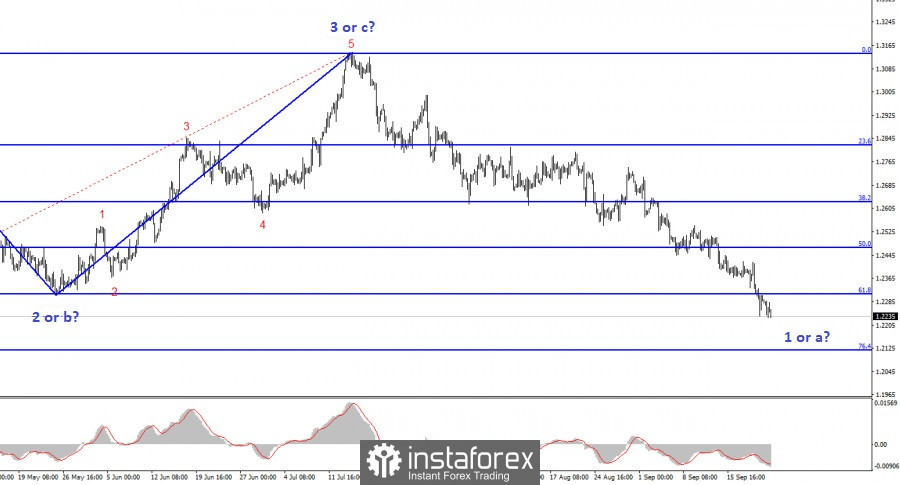We can draw several conclusions after the central banks' meetings, some of which are not so obvious. The first conclusion is that both central banks have come very close to the end of the monetary tightening cycle. The only difference is the ambience of the information that surrounds each of them. While markets have been expecting the Federal Reserve to conclude its tightening cycle for at least half a year, if not more, nobody was expecting the European Central Bank to abruptly end its rate-hike program in September. In reality, the Fed is still raising rates, while the ECB may have completed its cycle in September.

The second conclusion is that inflation no longer matters in the EU. The ECB began hinting at the end of the tightening process when inflation was still far from its target. This means that the central bank can no longer tighten monetary policy due to economic weakness. This, in turn, implies that no matter how inflation behaves in the coming months and even years, it will not affect the central bank's decisions. The only exception might be a sudden surge in the Consumer Price Index.
In the United States, the situation is somewhat different. Inflation has accelerated for two consecutive months, and in September, the FOMC took a scheduled pause. This means that there is a 90% chance of a rate hike at the next meeting. In summary, this means that the Fed could raise rates once more, while there are already doubts about this happening with the ECB.
On Friday, Philip Lane stated that inflation above 2% is costly for the European economy, and interest rates remain the most effective mechanism for influencing the economy and inflation. However, the chief economist of the ECB did not mention anything about a rate hike. He also noted that the economy would remain weak this year, and there are many reasons for stagnation. These words suggest that there will be no rate hikes, as additional tightening could push the economy even lower.
Based on everything mentioned above, I believe that the euro will continue to fall over time. However, I still expect a corrective wave to form before the euro experiences further decline. In this regard, starting from the level of 1.0637 could be a reference point.
Based on the conducted analysis, I came to the conclusion that the upward wave pattern is complete. I still believe that targets in the 1.0500-1.0600 range for the downtrend are quite feasible. Therefore, I will continue to sell the instrument. Failure to break the 1.0636 level suggests the possible end of the first wave, which took on quite an extended form. So far, the presumed wave 2 or b appears to be the most likely scenario. At least until the price breaks above 1.0637.

The wave pattern of the GBP/USD instrument suggests a decline within the downtrend. There is a risk of completing the current downward wave if it is a d wave, but in my opinion, we are currently observing the formation of the first wave of the downtrend. At most, the British pound can expect the formation of wave 2 or b in the near future. I would advise you to be cautious when it comes to selling, as a corrective upward wave may begin in the near future. However, there are currently no signals indicating the start of this wave.
 English
English 
 Русский
Русский Bahasa Indonesia
Bahasa Indonesia Bahasa Malay
Bahasa Malay ไทย
ไทย Español
Español Deutsch
Deutsch Български
Български Français
Français Tiếng Việt
Tiếng Việt 中文
中文 বাংলা
বাংলা हिन्दी
हिन्दी Čeština
Čeština Українська
Українська Română
Română

